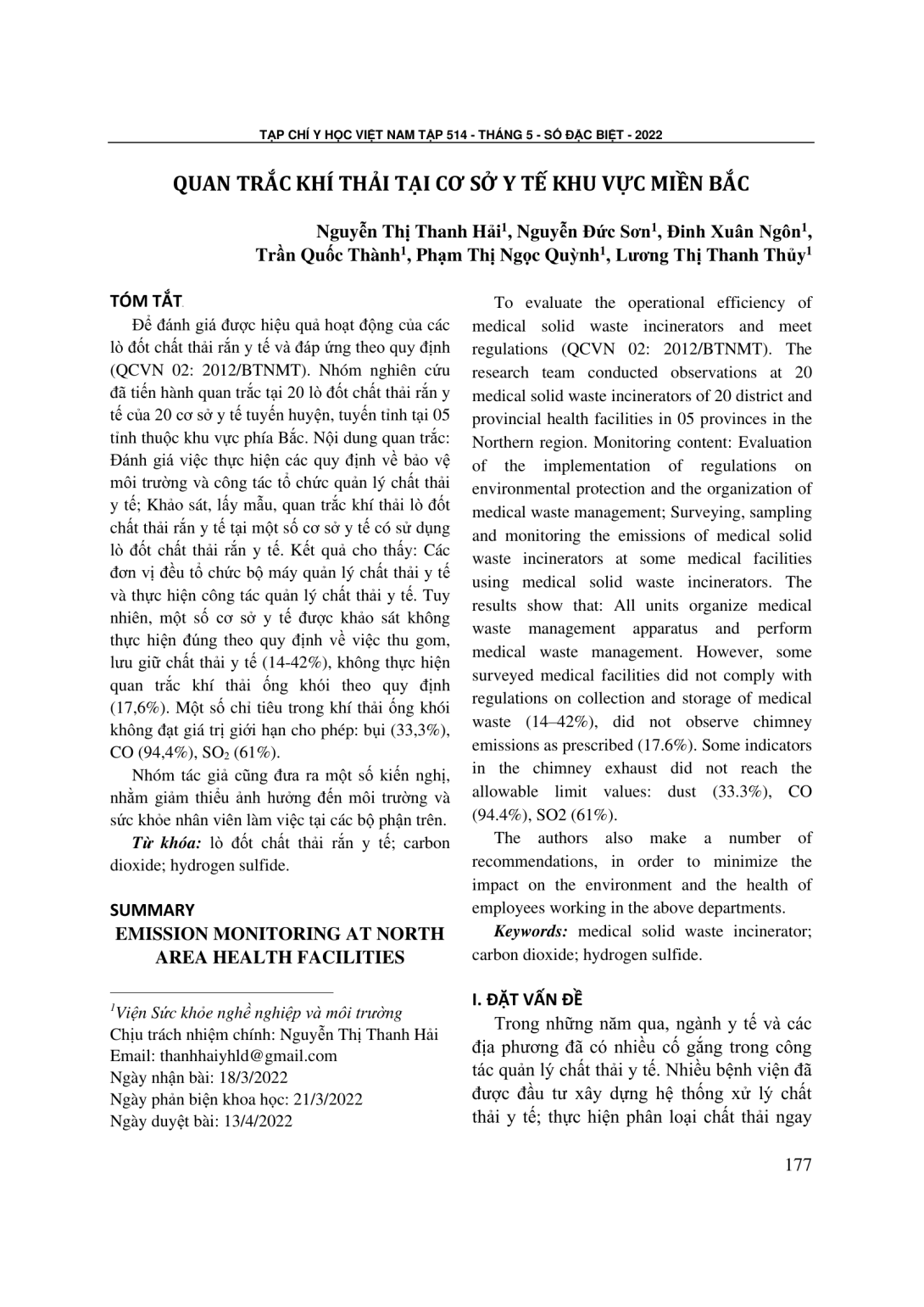
Để đánh giá được hiệu quả hoạt động của các lò đốt chất thải rắn y tế và đáp ứng theo quy định (QCVN 02: 2012/BTNMT). Nhóm nghiên cứu đã tiến hành quan trắc tại 20 lò đốt chất thải rắn y tế của 20 cơ sở y tế tuyến huyện, tuyến tỉnh tại 05 tỉnh thuộc khu vực phía Bắc. Nội dung quan trắc: Đánh giá việc thực hiện các quy định về bảo vệ môi trường và công tác tổ chức quản lý chất thải y tế; Khảo sát, lấy mẫu, quan trắc khí thải lò đốt chất thải rắn y tế tại một số cơ sở y tế có sử dụng lò đốt chất thải rắn y tế. Kết quả cho thấy: Các đơn vị đều tổ chức bộ máy quản lý chất thải y tế và thực hiện công tác quản lý chất thải y tế. Tuy nhiên, một số cơ sở y tế được khảo sát không thực hiện đúng theo quy định về việc thu gom, lưu giữ chất thải y tế (14-42%), không thực hiện quan trắc khí thải ống khói theo quy định (17,6%). Một số chỉ tiêu trong khí thải ống khói không đạt giá trị giới hạn cho phép: bụi (33,3%), CO (94,4%), SO2 (61%). Nhóm tác giả cũng đưa ra một số kiến nghị, nhằm giảm thiểu ảnh hưởng đến môi trường và sức khỏe nhân viên làm việc tại các bộ phận trên.
To evaluate the operational efficiency of medical solid waste incinerators and meet regulations (QCVN 02: 2012/BTNMT). The research team conducted observations at 20 medical solid waste incinerators of 20 district and provincial health facilities in 05 provinces in the Northern region. Monitoring content: Evaluation of the implementation of regulations on environmental protection and the organization of medical waste management; Surveying, sampling and monitoring the emissions of medical solid waste incinerators at some medical facilities using medical solid waste incinerators. The results show that: All units organize medical waste management apparatus and perform medical waste management. However, some surveyed medical facilities did not comply with regulations on collection and storage of medical waste (14–42%), did not observe chimney emissions as prescribed (17.6%). Some indicators in the chimney exhaust did not reach the allowable limit values: dust (33.3%), CO (94.4%), SO2 (61%). The authors also make a number of recommendations, in order to minimize the impact on the environment and the health of employees working in the above departments.
- Đăng nhập để gửi ý kiến
